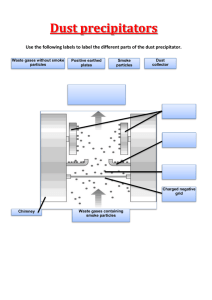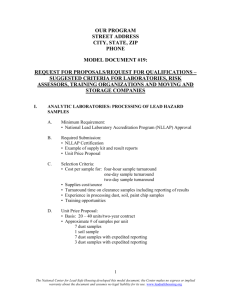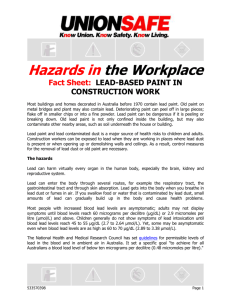Lead Poisoning Prevention - The Facts (for use with press release)
advertisement
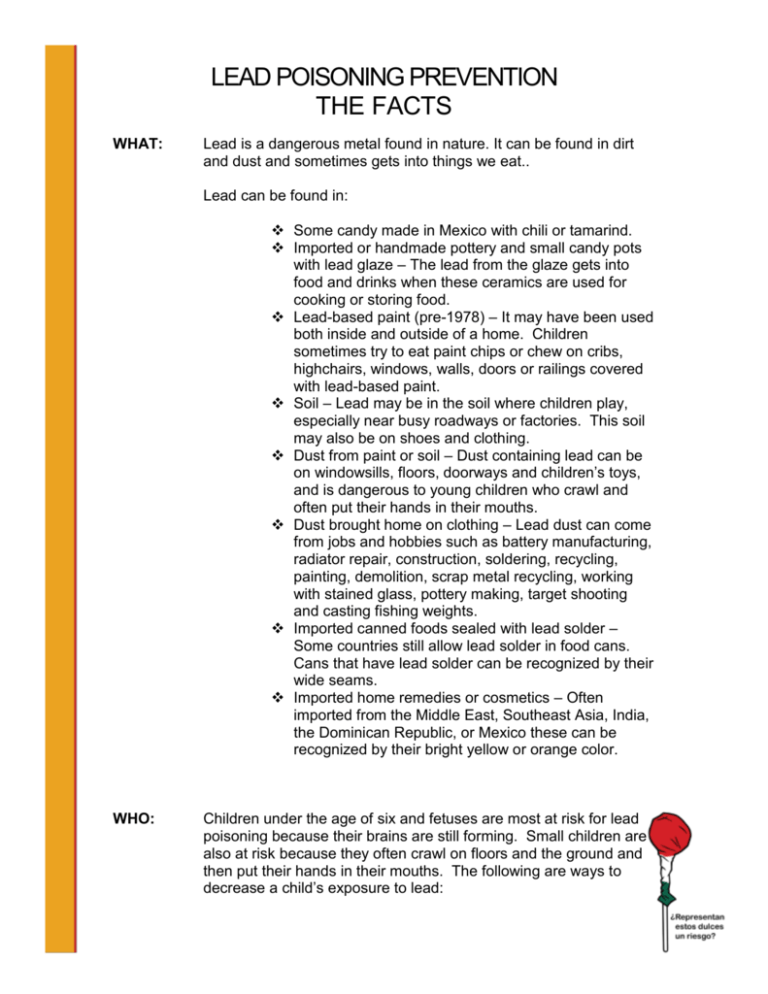
LEAD POISONING PREVENTION THE FACTS WHAT: Lead is a dangerous metal found in nature. It can be found in dirt and dust and sometimes gets into things we eat.. Lead can be found in: Some candy made in Mexico with chili or tamarind. Imported or handmade pottery and small candy pots with lead glaze – The lead from the glaze gets into food and drinks when these ceramics are used for cooking or storing food. Lead-based paint (pre-1978) – It may have been used both inside and outside of a home. Children sometimes try to eat paint chips or chew on cribs, highchairs, windows, walls, doors or railings covered with lead-based paint. Soil – Lead may be in the soil where children play, especially near busy roadways or factories. This soil may also be on shoes and clothing. Dust from paint or soil – Dust containing lead can be on windowsills, floors, doorways and children’s toys, and is dangerous to young children who crawl and often put their hands in their mouths. Dust brought home on clothing – Lead dust can come from jobs and hobbies such as battery manufacturing, radiator repair, construction, soldering, recycling, painting, demolition, scrap metal recycling, working with stained glass, pottery making, target shooting and casting fishing weights. Imported canned foods sealed with lead solder – Some countries still allow lead solder in food cans. Cans that have lead solder can be recognized by their wide seams. Imported home remedies or cosmetics – Often imported from the Middle East, Southeast Asia, India, the Dominican Republic, or Mexico these can be recognized by their bright yellow or orange color. WHO: Children under the age of six and fetuses are most at risk for lead poisoning because their brains are still forming. Small children are also at risk because they often crawl on floors and the ground and then put their hands in their mouths. The following are ways to decrease a child’s exposure to lead: Check labels of any Mexican candy to ensure that it does not contain chili or tamarind. Do not eat Mexican candy that comes packaged in a clay pot. Wash your child’s hands and face frequently, especially before eating. Wash toys, floors, countertops and windowsills and wet mop floors weekly with an all-purpose detergent. Don’t let your child play in areas where soil is exposed. Vacuum carpets frequently to reduce household dust. Feed your child regular meals with foods that have calcium, iron, and vitamin C and are low in fat. Clean up paint chips and peeling paint safely. Pay special attention to cribs, beds, highchairs, and playpens. Allow cold water to run for a few minutes in the morning before using it for drinking, cooking, or mixing formula in case there may be lead in your household pipes. Do not use hot water from the tap for drinking or in food preparation. Avoid using handmade, older, or imported dishes for food or drink preparation, storage, or serving, unless you are sure they do not contain lead. Take your shoes off before entering the house. Pay special attention to your child when visiting other countries that may not have the same lead restrictions. Adults who work in jobs or hobbies where they may come in contact with lead should change their clothing at work and wash their hands thoroughly before touching children. WHO: (Your organization name) is committed to helping consumers learn about the problem of lead in some candy from Mexico and how to make safer choices for their families. Funding is provided by the Public Health Trust, a program of the Public Health Institute, through a defendant’s settlement of a complaint brought by the State of California. # # # #
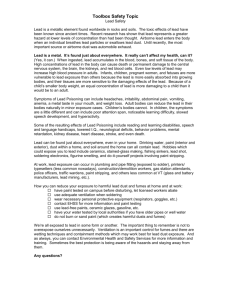
![[Agency] recognizes the hazards of lead](http://s3.studylib.net/store/data/007301017_1-adfa0391c2b089b3fd379ee34c4ce940-300x300.png)

